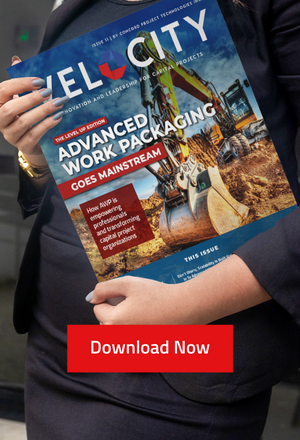
Olfa Hamdi is the founder and director of the Concord® Academy, co-founder of Concord® Project Technologies and the founding executive director of the Institute for Advanced Work Packaging. She was a member of the CII research team that produced IR-272, and is now leading the movement for predictable, integrated, technology-driven capital projects management.
How AWP and Predictability Thinking® are empowering professionals and transforming capital project organizations
If you’re missing project deadlines, if you’re going over budget, if you’ve got an erratic and unpredictable project delivery system, Advanced Work Packaging can help. AWP has been adopted at record speed by capital project leaders for good reason: it is adaptable, scalable, and effective in all types of capital project organizations, from petrochemical and mining installations to rocket ships and more. At Concord®, we’ve used our proprietary AWP protocol — along with Predictability Thinking ® — to help some of the world’s biggest Owner organizations adopt AWP, and we’ve seen the benefits first-hand.
Advanced Work Packaging has quickly become the gold standard for companies that are serious about on-time, on-budget project delivery. It’s not a “nice to have,” it’s not something to “try out and see how it goes.” AWP is a structural upgrade that is central to and critical for the efficient functioning of a modern capital project organization. It is best practice.
Advanced Work Packaging has quickly become the gold standard for companies that are serious about on-time, on-budget project delivery.
Olfa Hamdi Tweet
If you talk to capital project veterans, they’ll tell you that AWP is very similar to the way we used to do capital projects back in the day. At some point, we lost our way — capital projects were dismembered, and the left hand no longer knows what the right hand is doing. We’ve worked with companies that are so siloed that the engineering and procurement divisions are essentially separate organizations, speaking different languages and using different sticks to measure success. It’s impossible to deliver predictably in this context.
How does AWP solve this problem? First, it integrates siloed functions. People working in a construction-driven project environment understand how their work
impacts their own department as well as other departments in the organization. AWP is the best way we’ve found to effectively integrate an organization — it’s not a tool, it’s not a software you buy, it’s a system that impacts people’s behavior, job functions, roles and responsibilities.
Second, AWP establishes interdependent accountabilities that are aligned with project-level goals — no single department can succeed unless the entire project succeeds. For example, a procurement group may save $1 million by purchasing a key component from a new supplier, but if the new supplier cannot deliver the component on schedule and the organization pays millions of dollars to workers who have nothing to do, then the procurement department has failed. AWP makes these interdependent accountabilities visible.
Third, the AWP body of knowledge is empowering to capital project professionals. It makes them conscious of their unique role in project success, and highlights the need to work as a team. The AWP body of knowledge, along with Predictability Thinking®, supports capital project professionals to become better project managers, directors, construction managers, and more.
I hope you enjoy this most recent issue of Velocity®, which focuses on the many ways in which AWP has transformed the capital projects sector and become a mainstream approach to project execution.

Olfa Hamdi
CEO, Concord® Project Technologies





